Mainly used for balance, trekking poles can help save your joints, and save energy on steep climbs. A good pair of trekking poles like the TREK Z Trekking Poles help distribute weight from your legs and joints by reducing impact force on your knees especially on long downhills. These days trekking poles have become increasingly popular among casual hikers, trail runners, thru-hikers, mountaineers, and backpackers of all ages.
The advantages of hiking with trekking poles are possibly endless. But with so many choices for trekking poles these days, how do you find the best trekking poles that match your needs? Below we go through all the important features you need to consider when buying trekking poles and also explain why you need to use trekking poles while hiking or backpacking.
Want to know which trekking poles are the best? Then consider checking out this blog post "17 Best Trekking Poles: Complete Buying Guide" by ORIGYM.
Why Use Trekking Poles?

Now, many of you might think, “why do I even need a pair of trekking poles when I can reach my campsite on my own just fine?”. For those of you who are still hesitant here are some solid reasons to consider:
1. Regardless of whether you walk on a flat trail or climb up a hill, they provide great footing and balance, which are much needed when you cross uneven ground, like loose rocks, small rivers, etc.
2. Trekking Poles reduce the stress on your feet, ankles and other areas of your legs, and also your hips, especially during descents, providing you with greater stability, thus reducing the risk of injuries.
3. With trekking poles in your hands, your friction gets better even on slippery areas like snow, mud, etc.
4. Even if you have back injuries, using trekking poles while hiking keeps you upright, thus improving your posture and help maintain proper balance.
5. Top rated trekking poles help you to easily detect holes, puddles, or other hurdles on your trail that could otherwise hinder your progress.
6. Trekking poles also help in getting rid of annoying things like hanging leaves, spider web, thorny twigs, and so much more, making you feel more comfortable on your trail.
7. They can also help protect yourself from the wildlife you encounter when outdoors.
8. Additionally, trekking poles also make a great tool for pitching tents, tarps, etc.
Check out this blog to find out why trekking poles are beneficial to your health.
Features to consider while buying trekking poles

- Hiking Staffs or Trekking Poles?
Choosing between hiking staffs and trekking poles mainly depends on your preference to use a single pole or two. You can choose to take a single pole if your planned hike is going to be short, or two for long hikes to properly balance your weight throughout the trail. Regardless of the number of poles you wish to use, the best option would be to buy a pair of trekking poles, and during times you feel like using only one pole, you can simply fold the other and throw it in your backpack.
Do check out this blog post if you're interested in learning how to use trekking poles.
- Pole Designs

Trekking Pole designs can be categorized as two-section telescoping, three-section telescoping or foldable. Some poles feature a combination of telescoping and folding for a great combination of packability and adjustability. Each style offers distinct advantages and disadvantages.
Foldable trekking poles are relatively new to the market. They can fold up even smaller than the three-part telescoping pole and are lighter, making them easy to pack, store, and carry. Folding trekking poles are designed to have a fixed height. If you are an experienced hiker or trekker and prefer mixed terrains for your outdoor adventure, foldable trekking poles would be the ideal choice for you.
- Trekking Pole Height

Though most trekking pole models today come with adjustable lengths, one tip you can remember to determine the right length of your trekking poles is that, your elbows should be at a 90-degree angle when you hold them with their tip resting on the ground.
In general, for both fixed length and adjustable length trekking poles, if your height is 6 feet or more, the minimum length of your trekking poles should be 51 inches. An amazing benefit of using adjustable length poles is that, if you are shorter, you can easily shorten the length of the poles to match your height.
However, if you choose to go with fixed length trekking poles, the length of your poles with regard to your height should be:
- 39 inches for those shorter with height less than 5 feet.
- 43 inches for those with height between 5’1” and 5’7”.
- 47 inches for those with height between 5’8” and 5’11”.
- And, 51 inches for those who are 6 feet or taller, as mentioned before.
- Grip

The grips on your trekking poles are there to make it comfortable for you to handle the poles, and they are made with a lot of different materials to meet the varied needs of users.
Some of the most commonly used materials are foam, rubber, and cork. Foam grips are known to be the most comfortable option due to their softness; however, they tend to absorb more moisture (which is actually good for trekking), as a result of which these grips could smell over time absorbing your sweat.
Rubber grips are more on the heavier side, but they are known for their insulation and water-resistant properties, which makes them perfect for trekking in colder regions. These grips are not recommended for warmer conditions where your hands could sweat a lot.
Cork is another moisture-resistant option when it comes to trekking pole grips. Their ability to wick sweat from the user’s hands, absorb vibrations from the ground and adapt to the shape of the user’s hands with time make cork grips a widely preferred choice. Trekking poles with cork grips tend to be more expensive.
If you prefer cork handles then consider buying the TREK-Z Trekking Poles with Cork Handle.
You can also look for trekking poles that are designed with ergonomic grips, which you can easily identify from the way a pole grip leans forward. Also, trekking poles with ergonomic grips are designed or shaped to suit your palm accurately. While this feature is not really essential, it will certainly make holding the poles easier for you.
- Trekking Pole Materials

Most of the trekking poles in the market are made from carbon or aluminum. Carbon trekking poles tend to be lighter in weight, but are quite expensive and can also break easily. Comparatively, aluminum trekking poles are slightly heavier but more durable and are cheaper than carbon poles.
- Shock Absorbers
Some modern trekking poles also come with a shock absorbing feature. As the name implies, this feature enables the poles to absorb shock or vibration during your trek, preventing your body from experiencing the same, thus eliminating the adverse impact. Most trekking poles also allow you to turn off this feature when you think it’s not necessary. While the shock absorbing feature will benefit everyone, it is especially important and useful for those trekkers with problems or injuries in their hips or knees.
Want to find the best anti shock trekking poles? Then check out this blog post.
- Wrist Straps

Many trekking poles come with wrist straps, which is another useful feature you should look for in a pole. The straps allow you to rest your wrists for some time by relaxing your grip and transferring the strain to your arms. Straps will make a huge difference when you go on long treks, and you can also look for ones that come with padding for additional comfort. You may also be able to find trekking poles with removable wrist straps.
- Men’s, Women’s, or Kids?

While most trekking poles are designed for unisex use, there are some that are designed specifically for men, women, or children. These poles often differ in terms of weight, length, color, and the size of the grips. For instance, women's trekking poles usually tend to be shorter in length and contain smaller grips to accommodate those with smaller hands.
- Trekking Pole Tips

Most poles come with a carbide steel tip. An accessory to most poles are these rubber tips to cover the tips. The carbide tips can be noisy and skid on hard surfaces. Rubber tips are quieter and great on hard surfaces such as pavement and slick rock. But they can slid on wet surfaces and don’t provide the same secure grip in loose dirt.
Click here to learn more about trekking pole tips and baskets.
- Locking Mechanisms

Regardless of whether you choose fixed length or adjustable length poles, all trekking poles come with locking mechanisms to prevent them from changing in length when in use. Some of the basic locking mechanisms you will find on trekking poles are: twist lock, push button lock, external lever lock, and combination lock. Twist and flick locks are the most common and easy locking mechanisms.
Final Thoughts
Choosing the best trekking poles starts with selecting the right material. You should also consider other factors such as the poles adjustment system, basket size, whether you need a pole with shock absorbers, weight, versatility and grip material. Apart from these features, what’s more important in choosing the best trekking poles is your personal preference.
Want to cut your hiking gear expenses in half (or more)? Then do check out this blog post: 7 Ways To Save Money On Hiking Gear
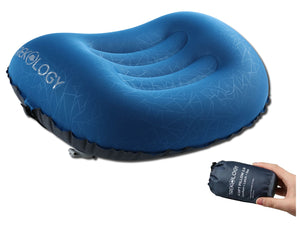
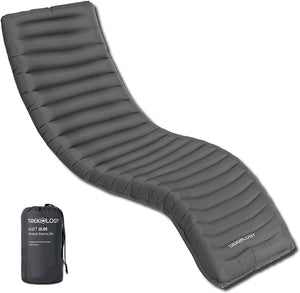
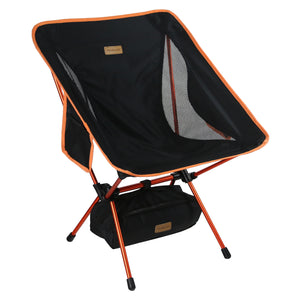
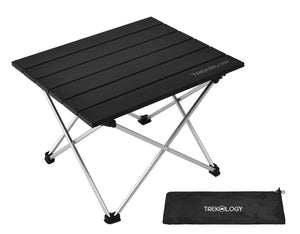
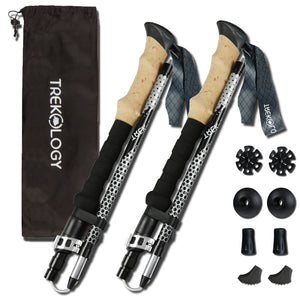












Lewis lokitz
June 27, 2023
In researching which new poles to buy, (I purchased trekology ) I read a fair amount about them. But none of the articles mentioned the need for caution when handing the poles from adjusting the length to walking and carrying them. Responsible handling is a must. Know whose behind and around you when using the poles. Be sure others are not too close. When you stop walking be aware of proximity to other hikers. If you use the pole to block branches or webs ie the poles are elevated, look out at your surrounding. Don’t use them to “point “ at things. If you place them on the ground be sure they won’t be tripped on. A lot of this is common sense but…. Keep on trekking’…